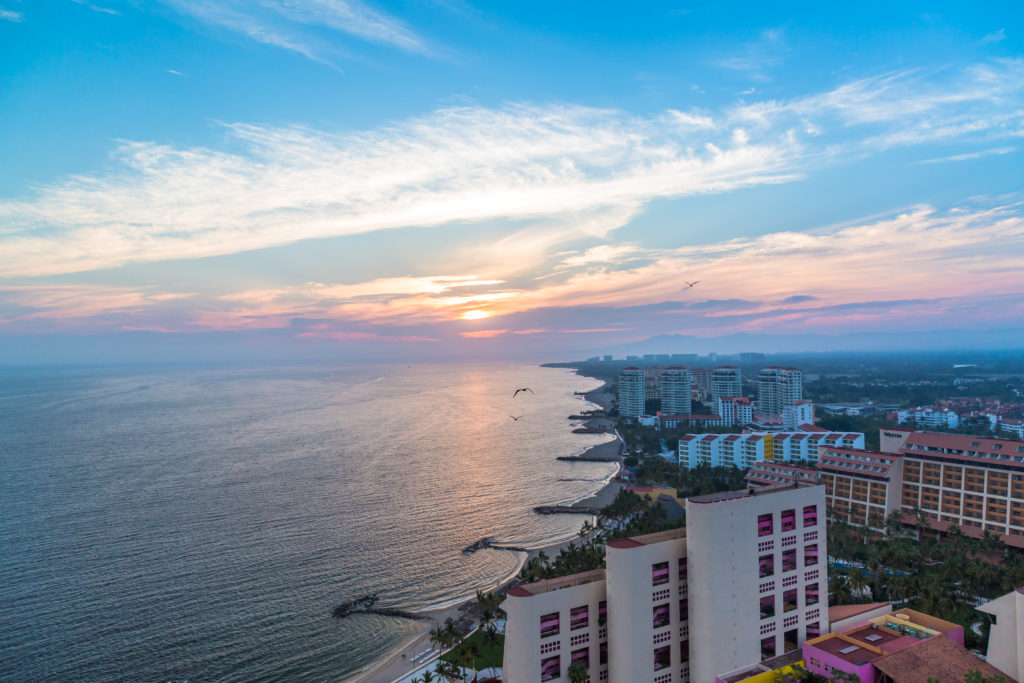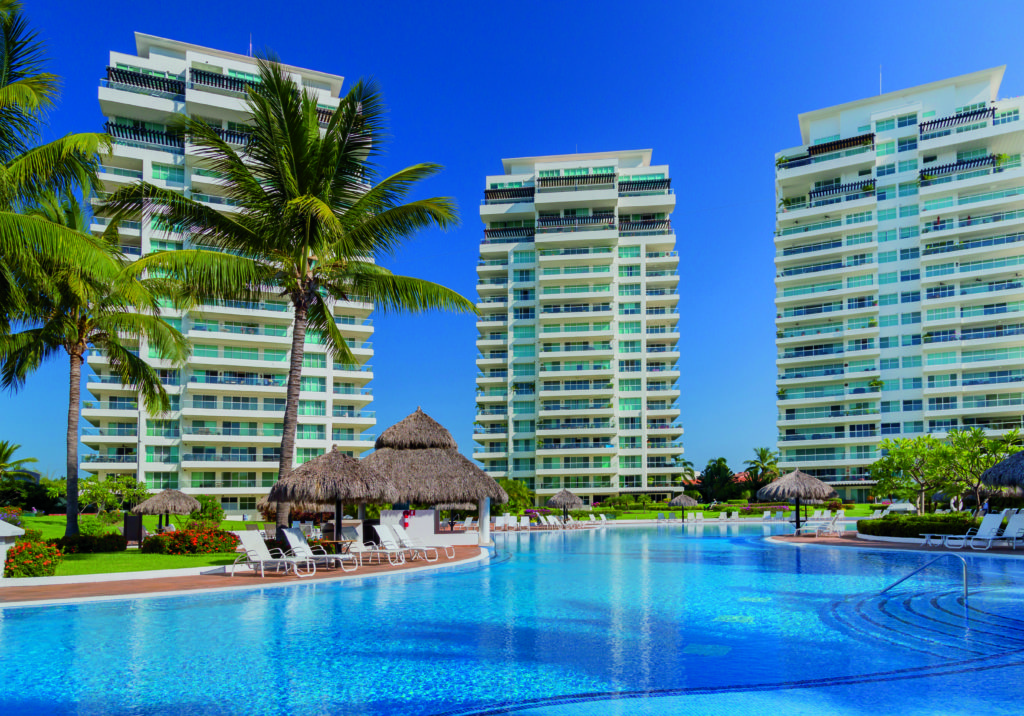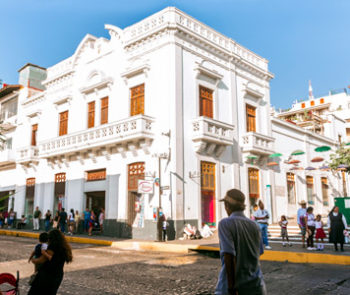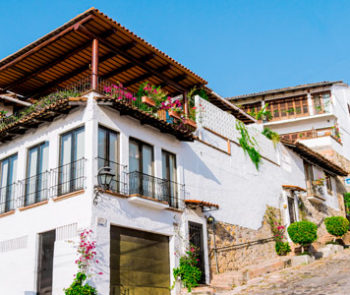History of Puerto Vallarta Architecture – Part III
Beginning with the founding of the city in 1851, where serrana (highland) architecture dominated the landscape for almost a century, and then was accompanied by movements such as functionalism (or the very peculiar and idiosyncratic Vallarta style in the mid-20th century), this series of three articles explores Puerto Vallarta’s architectural history with a chronological review of its most emblematic trends, styles and constructions.
For this third and final part, we again count on the valuable collaboration of architects and urban specialists Alfonso Baños and Óscar Morán and undertake a journey from the ‘70s to the present day, covering a period of almost 50 years in which the positioning of Puerto Vallarta among the top destinations worldwide changed the urban landscape in order to adapt to the new tourism and demographic needs of a region that would grow at a rapid pace.

Adapting to Large-Scale Tourism
Starting in the ‘70s, tourism gained colossal importance in Puerto Vallarta, which triggered important urban growth. Baños notes that, during this period and until the ‘90s, “the architecture was characterized by largely maintaining elements of serrana architecture and Vallarta style, executed on a large scale with the arrival and construction of chain hotels.” During these decades, the first condominium developments were also built.
The first chain hotel to arrive was Hotel Posada (1963), which by the ‘70s already had 500 rooms, a convention room, a plaza, shops and restaurants, a monumentality never before seen in the city, with a style that united traditional flavor with modern needs. Then followed the Camino Real, which also incorporated some characteristics of the local architecture. The Fiesta Americana, which would follow the same path, was a milestone in size and colorfulness. Also, at the end of the ‘70s, the construction of the Sheraton Hotel (the first major international hotel company to venture into the destination) stands out, exceeding the size of its predecessors, especially with its subsequent expansion at the end of the ‘80s, where care was taken that the materials and elements respected the typical architecture of Puerto Vallarta.
Another milestone happened in the mid ‘80s, with the development of Marina Vallarta, a large complex focused on tourism and luxury residences, including houses, condominiums, hotels such as the Regina and Meliá and recreational areas such as the large marina and a golf course. In those constructions, following the Plan Maestro de Urbanización (Urbanization Master Plan) of the time, it was specified that the buildings had to respect Vallarta style, using traditional elements and materials, so that there are still sloping tiled roofs, among other characteristics.
Regarding this stage (from the ‘70s to the ‘90s), Morán comments that “the integration of Vallarta style was always gradual with the new trends. Until the beginning of the ‘90s, all the architects—including Wulff, Díaz Escalera and Favela, who were still active—you can see the intention to integrate those materials that were used at the beginning. These decades coincided with the period of influence of postmodernism, with exploration of classical forms and again experimenting with vaulted ceilings, domes, arches and abstractions of classical and neoclassical against the simplicity of the forms of functionalism, which was a Modernist movement.”
The Vallarta of the 21st Century: Condominium Developments
At the end of the ‘90s, an architectural and stylistic revolution began in Puerto Vallarta. For the first time, new buildings did not present typical characteristics of the Vallarta style but focused on a contemporary globalized aesthetic, more adapted to the needs of tourist activities and the greater influx of foreign residents. This caused a new phenomenon. “Until the end of the ‘90s, the biggest tourist investment was in hotels, but from 1999, the main investment becomes condominiums,” says Baños. During the period from 2000 to 2008, construction of residential buildings such as Bay View Grand, Shangri-la, Molino de Agua, Península, Icon and others changed the destination’s urban landscape. “As of the 21st century, we can talk about Vallarta taking on a more defined skyline,” adds Morán.

As of 2013, this contemporary style spread with greater force. “Verticality is beginning to be seen in consolidated neighborhoods such as Emiliano Zapata and Marina Vallarta, with their new condominium developments, even in 5 de Diciembre and Versalles, when before there was only that height in the hotel industry. One of the main virtues of these new developments is that, for the first time, the roof is explored as a recreational area, offering views and amenities from the comfort of the building,” stresses Morán. Baños says that, at present, “there is large-scale architecture where many try to incorporate some of the elements of Vallarta to a certain extent, although others seek to implement styles that are more modern and attractive for tourism.”
Finally, Baños says he is optimistic about the future of architecture in Puerto Vallarta. “I think a new wave of architects is emerging that are committed to sustainability and are building modern, functional and aesthetically attractive buildings. In addition, they are aware of ecological and climatic values, as well as the uniqueness of the local identity, which generates value for the community.”


